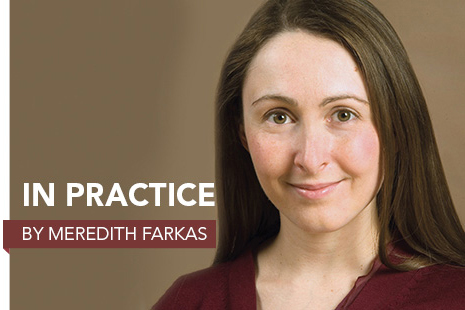
I recently attended the Library Assessment Conference in Seattle, which is a fantastic event for anyone who wants to keep up with trends in library assessment. At this year’s conference, one thing was abundantly clear: Data is king.
All three keynote speakers spoke about the use of data in libraries to improve services, better understand our user populations, and demonstrate library value. There were also presentations and posters on data visualization, using Geographic Information Systems (GIS) in space planning, and other ways libraries are using data. One speaker even suggested that all libraries should be collecting usage data at the individual transaction level for future research.
Libraries are rather late to the data party. Do you have a retail loyalty card in your wallet? Those cards are used to track your purchases so stores can better tailor their marketing and inventory. This is how, based on certain purchases, Target knows to send coupons for baby products to women before they’ve told anyone they’re pregnant. In higher education, enrollment management and student affairs personnel have been using predictive analytics systems for years that use past student data to predict who is likely to succeed at an institution and how the institution can help them succeed.
Libraries at the University of Minnesota and the University of Huddersfield in the UK have examined correlations between different kinds of library use and student achievement, and they have found that many types of library use are associated with academic success. They have also studied specific populations within their institutions—different majors, international students, etc.—to explore their library usage. Predictive analytics can tell an academic advisor when it would be best in a student’s academic career to take a required class to make success more likely. For libraries, user data can be used to develop outreach to specific user populations or even individuals that exhibit certain behaviors—like no library use.
However, correlation and causation are two different things. While it’s possible that library use is associated with student persistence and success, other elements me be contributing. Therefore, telling students that using the library will help keep them in school may not be entirely accurate. Sometimes the data that’s collected doesn’t tell the whole story.
Another major issue is privacy. While most libraries are using aggregate data that has been scrubbed of what they consider identifiable information, individual students have usually not consented to be tracked in this way. And how will students feel if they are targeted because of how they did or didn’t use the library? If patrons feel the library is tracking them, what impact will that have on intellectual freedom? Without being specifically told what is being collected, users might assume the library is tracking the books and articles they access.
Predictive analytics isn’t just for academia; employers like Hewlett-Packard have used data to predict which of its staff members might be at risk of leaving. How would you feel knowing that your employer is doing this sort of research on you?
We are clearly in a brave new world of data. And librarians, like people in all sectors, will have to consider where to draw the line on collecting and utilizing user data. As librarians, though, we should hold ourselves to a higher standard as we are bound to protect the privacy of our patrons. We will need to find a balance between the good we can do with data and our commitment to our code of ethics.


